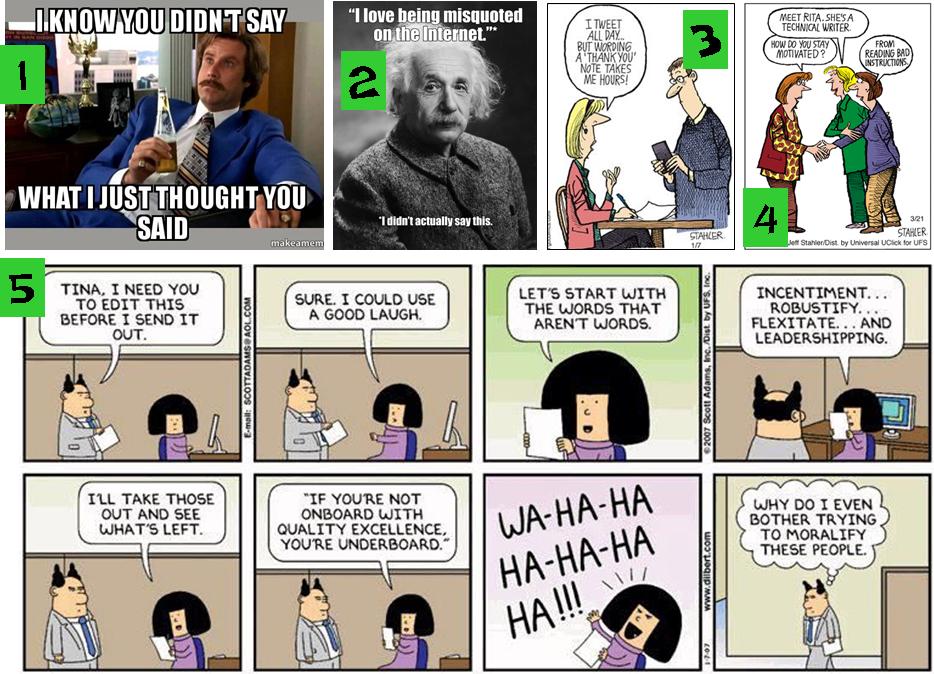Frustrated with what passes for “communication” in today’s linguistically evolving world? What do these humorous attempts to get and give info make you want to say?

Ironic, isn’t it? Images with verbiage like the above make it hard to decide what to write in an article called “How to Decide What You Want to Hear or Say.” In both listening and speaking, ferreting out “Truth in Our Times” gets more and more difficult in the “Age of Alternative Facts.”
Before considering the kinds of talk apt to make communication difficult in today’s world (disputes, attempts at problem solving or conflict resolution, legal talk, persuasion, efforts to sell, debate) what is it that’s worth “perfect” (or at least effective) understanding and expression of meaning? Surely we can begin with what’s least controversial and most simple: everyday talk on everyday topics.
What do we already know from previous articles? Mostly, we’re aware of how words and sentences are pronounced in phrases and sentences. We can understand and (re)produce the features of comprehensible, expressive speech: vowel + consonant sounds in all word positions; appropriate syllable stress; an even (or purposely uneven) rhythm or speech music; meaning focus in phrases and sentences; timing with rate + pausing that make a difference; and (step or glide down) falling intonation compared to (step or glide up) rising inflection. And finally, we have some idea of how to combine the above features to meaning.
Here are links to previous blog posts on those subjects:
- Listen Up! Listen Here! And Listen Good!
- Better Listening for Better English, Better Life
- Value Vowels.
- Care about Consonants.
- Succeed with Syllables.
- Get What You Hear. Say What You Mean.
So now that we have the ability to understand and say what we wish, what do we want to hear and say? In ordinary work/life circumstances, most of us talk either about:
1. Ourselves: our backgrounds, life situations, studies, work, interests, needs, wants, feelings, thoughts, opinions, hopes, plans, and/or
2. Everything Else—which can be categorized as being about:
- Things: what they are, how they look/feel/sound/smell/taste, how they compare
- Places: where they are, what they're like, how to get there
- People: who they are, what they did/do, how/why they're worth attention
Are you a language teacher, second-language learner, and/or native speaker working on your use of English in everyday situations? Then in addition to clarity of accent, you’ll probably want to pay attention to other aspects of language:
- Grammar & Structure (i.e. how different kinds of words fit together to express meaning). Depending on your topic and your purpose in hearing and talking about it, certain grammatical structures will help you and others to understand and express yourselves. For instance, in talking about “things,” you’ll probably need to know about nouns, pronouns, and adjectives. From Before Speaking: Activities for Practice & Preparation in Oral Language Skills, Part One: Talk About Things, here’s an early “Grammar Review,” of Sentences with Be, There Is / Are, and Location Phrases. For a model of how to connect typical sentence patterns with colorful and realistic simulations to talk about—and fun ways to do so, you can download, print out, and use these six pages.
- Linguistic Principles with Vocabulary (i.e. not only general items basic to the content but also some for a targeted purpose). The words and phrases you’ll need depend on your listening/speaking intents and purposes. To illustrate, from Before Speaking: Activities for Practice & Preparation in Oral Language Skills Part Two: Talk About Places, here are not only “Grammar Notes” (Nouns & Adjectives) but also “Language & Vocabulary Notes” that cue users who want to “Talk About Interiors.” You can use these eight pages as a sample template of how to connect pedagogy to practice and performance.
- Notions & Functions (i.e. grammar/vocab combos that produce optimal phrasing). Let’s say, for example, that you want to “Learn & Tell About People’s Lives.” In addition to noun phrases that identify your subjects, you’ll need the appropriate tense forms of verb phrases (with and without objects) to hear or tell what they did, do or are doing, and/or will do. To get an idea of how combining language elements could work in factual communication, try the pedagogy, item lists, and attractive visuals in some fun activities from Before Speaking: Activities for Practice & Preparation in Oral Language Skills Part Three: Talk About People.



So what else might be useful to know in hearing and talking about non-controversial topics? In Speaking: Oral Language Skills for Real-Life Communication, there are explanations, sample conversations and speeches, oral-practice activities, and assignments related to eight kinds of speech. Here are the introductory “Mini-Lectures” about the gentlest of these categories: Short Talk, Not Small Talk; Talking about Anything; Instructional Speech; Narration (Story-Telling).
Yet even these four kinds of “harmless talk” are hard to perfect—to guarantee that they’ll lead to real understanding, true expression, and effective communication.
The next article will attempt to address "more difficult” kinds of talk: Problem-Solving, Conflict Resolution, Persuasive Selling, and Debate. So far, it’s entitled “Imperfect, Incomplete, & Imprecise Talk on Everything but Everyday Topics.”
In the meantime, here are links to the original texts the above samples were taken from:
- Beginners' Before Speaking with Pronunciation Principles
- Before Speaking: Activities and Practice for Preparation in Oral Language Skills
- Speaking: Oral Language Skills for Real-Life Communication
- Open-Ended Questions
For monthly email newsletters with free tips, tools, and resources for English language teachers and learners, sign up here!





